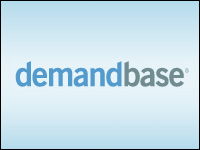
Demandbase is extending beyond its Web analytics and sales roots with a new platform that allows B2B advertisers to target and personalize display ads for specific companies.
Demandbase Company-Targeted Advertising, which has been incorporated by Eloqua within its own marketing automation application, represents a shift for Demandbase.
“Our solutions [previously] were all focused on making the website a more personalized sales and marketing experience and increasing conversion rates,” Chris Golec, founder and CEO, told CRM Buyer.
The introduction of Demandbase Company-Targeted Advertising forms a closed loop between sales activity and advertising campaigns, he said.
Typical Online Ad Model vs. Demandbase
The typical online ad model serves ads to pretty much anyone. Even models that focus just on the B2B space can find the universe awfully big.
“There are six million active businesses in the U.S.,” Golec said.
With Demandbase’s approach, ads are served to a select group of businesses, whether they number 100 or 1,000.
Unlike the traditional online ad model, cookies are not used with Demandbase. Rather, prospects are identified on the Web visitor’s first visit to a site. Demandbase then maps the IP addresses for future use.
“That is our secret sauce — we specifically know the IP address, so there is no tracking or use of cookies,” Golec said.
The application is based on Demandbase’s Real Time Identification Service. It matches information about a website visitor — like company name or industry or size — with its database of IP corporate addresses.
How It Works
Companies provide Demandbase with a list of firms they want to target, either from a prospect list or a generic list, say, of Fortune 1000 companies.
“That ad can be personalized with the company name and logo,” Golec explained. “Where it gets very interesting is the system doesn’t just serve the ad, it also changes the experience when the visitor comes to the website.”
For example, Salesforce.com might use the system to target customers that currently use Oracle but are thinking about switching to Salesforce.com.
“So the ad is only served to those customers, and when they come to the website they are guided to content tailored for them, such as a case study about a company switching to Salesforce.com.”
The application also differentiates itself by helping customers track engagement on their website and then connect each campaign with revenue generated by specific businesses.
“This is something customers find pretty exciting,” Golec said — “being able to tie actual sales to advertising campaigns.”





















































